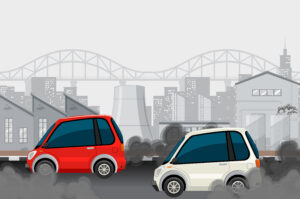Outline for the Article:
- Introduction: The Impact of Traffic-Related Air Pollution on Blood Pressure
- Study Findings: Association Between Air Pollution and Blood Pressure Increase
- Understanding Traffic-Related Air Pollution (TRAP)
- What Comprises TRAP?
- Health Risks Linked to TRAP
- Study Design: Effects of Unfiltered Air on Blood Pressure
- Research Methodology
- Results and Observations
- The Significance of Blood Pressure Increase from TRAP
- Comparison with Other Cardiovascular Risk Factors
- Potential Health Implications
- Role of HEPA Filters and Filtration Devices
- Effectiveness of Cabin Air Filtration
- Available Solutions and Practicality
- Insights on N95 Masks and TRAP Reduction
- Masks as a Potential Solution
- Comparison with COVID-19 Prevention
- Extending Health Risks Beyond Car Passengers
- Impact on Communities and Individuals Living Near Polluted Areas
- Health Recommendations and Preventive Measures
- Practical Steps for Reducing TRAP Exposure
- Suggestions for Homeowners and Commuters
- Potential Health Benefits of Air Filtration in Indoor Environments
- Clinical Evidence and Health Improvement
- Conclusion
- FAQs
Traffic-Related Air Pollution: How It Affects Blood Pressure
Traffic-related air pollution (TRAP) has emerged as a critical concern impacting human health, specifically by influencing blood pressure levels. Recent research has highlighted a concerning association between TRAP exposure and significant increases in blood pressure among individuals exposed to unfiltered highway air while commuting.
Studies conducted by experts at the University of Washington revealed startling findings regarding the impact of TRAP on blood pressure levels. The rise in blood pressure linked to TRAP was found to be comparable to other established cardiovascular risk factors like lack of exercise or excessive salt intake.

Understanding Traffic-Related Air Pollution (TRAP)
TRAP encompasses various harmful particles and gases emitted by vehicles, including ultrafine particles like PM 2.5, black carbon, oxides of nitrogen, and more. These elements, often associated with cardiovascular issues like irregular heartbeat, asthma, and premature death, pose severe health risks upon entering the circulatory system.
Study Design and Observations
Researchers conducted an experimental study involving car passengers exposed to unfiltered air for two days and filtered air on the third day using HEPA filters. The substantial increase in blood pressure associated with unfiltered TRAP exposure highlighted the immediate and sustained effects on individuals, raising concerns about daily commuters’ health.
Significance of Blood Pressure Increase from TRAP
The detected rise in blood pressure due to TRAP aligns with the magnitude caused by major lifestyle factors like poor diet or lack of physical activity. These elevations in blood pressure significantly contribute to heart disease, stroke, and kidney ailments, emphasizing the need to address TRAP exposure on a larger scale.
Role of HEPA Filters and Filtration Devices
While effective cabin air filtration, especially with HEPA filters, showcased potential in reducing TRAP’s impact, widespread availability and integration in automobiles remain a challenge. However, regular filter maintenance and the use of masks, including N95, while driving could aid in minimizing exposure to harmful particles.
Extending Health Risks Beyond Car Passengers
The study’s implications extend beyond commuters, highlighting the health risks faced by individuals living near highways, factories, or airports. Strategies to reduce exposure to TRAP encompass not only vehicular solutions but also recommendations for homeowners to enhance indoor air filtration.

Health Recommendations and Preventive Measures
Experts emphasize the importance of adopting measures to minimize TRAP exposure, such as routine filter changes in vehicles and utilizing air circulation systems in homes. These practices aim to mitigate the health risks associated with prolonged exposure to harmful pollutants.
Conclusion
The study underscores the critical impact of TRAP on blood pressure, emphasizing the urgency of implementing measures to reduce exposure. Solutions like HEPA filters and masks present practical ways to combat the health risks posed by traffic-related air pollution, contributing to improved cardiovascular health.
FAQs
- Q: How long does the blood pressure increase from TRAP persist? A: The rise in blood pressure can last up to 24 hours after exposure to unfiltered air.
- Q: Are HEPA filters effective in reducing TRAP impact? A: Yes, HEPA filters showcased significant potential in lowering the effects of TRAP on blood pressure.
- Q: Can individuals living near highways benefit from air filtration systems? A: Implementing air filtration systems indoors can aid in minimizing TRAP exposure for residents in polluted areas.
- Q: How frequently should cabin air filters be changed? A: Regular maintenance, approximately once a year, is recommended for cabin air filters to ensure efficacy.
- Q: Do N95 masks help reduce TRAP exposure? A: Yes, N95 masks not only prevent disease spread but also filter out harmful PM 2.5 particles from TRAP.
Traffic-related air pollution poses significant health risks, and understanding its impact on blood pressure underscores the importance of proactive measures to mitigate exposure. Adopting filtration solutions and practical habits can contribute to a healthier environment and improved cardiovascular well-being for individuals and communities alike.
Disclaimer: The information provided in this article is for educational and informational purposes only. It is not intended as a substitute for professional medical advice, diagnosis, or treatment. Always seek the advice of your physician or other qualified health provider with any questions you may have regarding a medical condition.
Thank you for your sharing. I am worried that I lack creative ideas. It is your article that makes me full of hope. Thank you. But, I have a question, can you help me?
yes